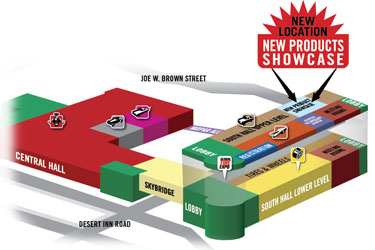Grow Sales With New Products From the SEMA Show

The New Products Showcase at the 2012 SEMA Show is in the back of the South Upper Hall. It will feature more than 35,000 square feet of new products for 2013. If you’re used to looking for it in the front of the hall, you’ll need to hike to the back.
Welcome back to the Hedges & Company blog, today we cover how to grow your sales with new products. We’re introducing a new term for some of our readers, the New Product Ratio (NPR).
The specialty auto parts industry thrives on new products and innovation. For retailers, warehouse distributors (WDs), manufacturers, and automobile dealers selling aftermarket products, new products are one of the best opportunities to grow sales. They create excitement among consumers and for brick and mortar retailers they help drive store traffic. For online marketers, new products increase organic search web traffic and bring in new visitors.
As a general rule, the specialty auto parts companies with the strongest growth have a New Product Ratio of around 15% to 20%, meaning 15-20% of total sales are from products first sold in the past 12 months. A new product is defined for manufacturers by the first shipped date, and for retailers or wholesalers by the first sold date.  And we’re referring to a rolling 12 months. We use a first-shipped date for manufacturers because that’s the true test of a new product coming to market. We use first sold date for retailers and wholesalers because that’s a true measure of consumer demand.
And we’re referring to a rolling 12 months. We use a first-shipped date for manufacturers because that’s the true test of a new product coming to market. We use first sold date for retailers and wholesalers because that’s a true measure of consumer demand.
When your NPR is 15%-20% you’re keeping it fresh
When your NPR is around 15-20% it’s a good sign you’re keeping your product offering fresh for your customers. The specialty auto parts industry adds tens of thousands of new SKUs every year, especially in the 4th and 1st quarters coinciding with new products unveiled at the SEMA Show. Consumers are very aware of new products and they’re looking for them on the Internet.
That NPR ratio is a starting point. For example, retailers selling a mix of automotive and non-automotive products could have a lower ratio. A retailer that depended on selling trendy products, mobile electronics or products to fit current model year new vehicles could see a higher ratio. If your ratio is too high it may be a sign you’re investing too much in research & development, or taking a risk with too much slow-moving inventory.
Being more aggressive on new products also creates the risk of overstocks on older inventory. You have to get rid of slow-moving products. A study conducted by Northwood University a few years ago showed manufacturers were introducing nearly four and a half times more products than they discontinued. The specialty auto parts industry doesn’t grow at a 450% annual rate so that means there’s a lot of inventory sitting around that might be destined for the dumpster. You have to stay on top of slow-moving products and get them out of your inventory on a regular basis.
The SEMA New Products Showcase in the back of the South Upper Hall has 35,000 square feet of what’s new and exciting for 2013 and it may be your most important stop at the show.
Note to manufacturers and data-driven resellers: Make sure your ACES data is updated too, so your existing product offerings will match to 2013 model year vehicles when appropriate, too.
Tomorrow: update on August retail sales of auto parts.
#SEMAshow #AAPEXshow





